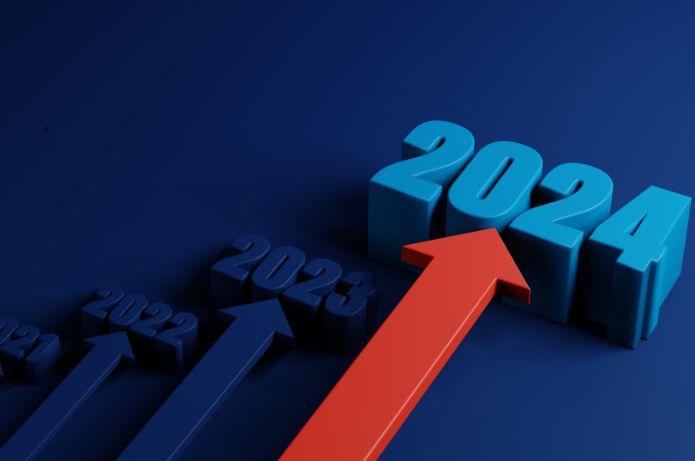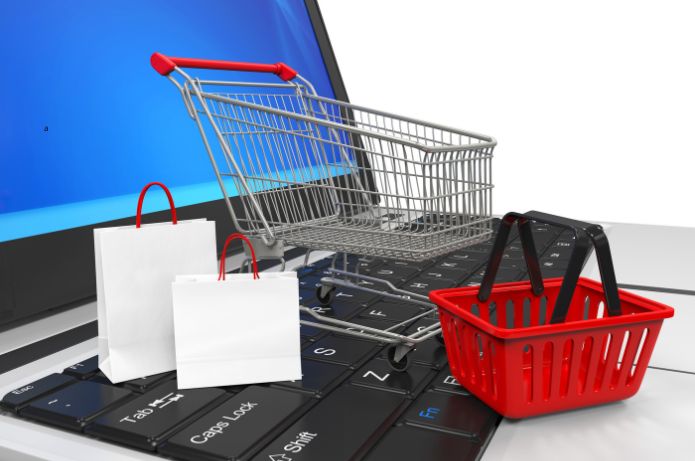E-commerce refers to the buying and selling of products or services over the internet
This business model has been expanding rapidly, offering convenience and accessibility for both consumers and sellers
With the growth of technology and the ease of use of mobile devices, e-commerce has become an essential part of modern commerce
The Concept of E-commerce
E-commerce refers to the buying and selling of goods and services over the internet. Its development has transformed the way consumers and businesses interact in the market
Definition of E-commerce
E-commerce, or e-commerce, involves commercial transactions carried out through digital platforms. In addition to physical assets, includes services, digital products and even subscription content. E-commerce offers convenience, allowing purchases at any time. Different e-commerce models exist such as B2B (business to business)B2C (business to consumer)C2C (consumer to consumer) and C2B (consumer to business). Popular platforms include Amazon, Mercado Livre and eBay
Evolution of E-commerce
E-commerce has evolved rapidly since the 1990s. Initially, involved simple sales transactions, but currently encompasses personalization, recommendations and advanced digital marketing. The popularization of smartphones and the improvement of logistics have driven their growth. Technologies such as artificial intelligence and big data are widely used to increase efficiency and improve user experience, creating a robust and constantly innovating industry
Types of E-commerce
There are several types of e-commerce, each with its characteristics and specificities. Next, some of the main models are presented, explaining their particularities and how they work
B2C: Business to Consumer
The B2C (Business to Consumer) model is the most common. Nele, companies sell directly to end consumers. Examples include online clothing stores, electronics and food. These businesses often invest in digital marketing to reach a wide audience
The shopping experience is generally optimized to be quick and easy. Platforms like Amazon and Magazine Luiza are popular examples. They offer a variety of products, from electronics to everyday items
B2B: Business to Business
In the B2B (Business to Business) model, companies sell to other companies. This format is common in industries that supply components, raw materials or specialized services
Examples are manufacturers that sell parts to car manufacturers or software companies that sell technological solutions to other companies. Negotiations can involve large quantities of products and long-term contracts
C2C: Consumer to Consumer
The C2C (Consumer to Consumer) model allows consumers to sell directly to other consumers. Auction platforms and marketplaces like OLX and Mercado Livre are examples of this type
Users can list and sell used or new products. This model is popular in categories such as clothing, electronics and collectible items. The interactivity between users facilitates the exchange of information and direct negotiation
C2B: Consumer to Business
In the C2B (Consumer to Business) model, consumers offer products or services to companies. A common example is the sale of stock images by freelance photographers to marketing companies
Another example is platforms where freelancers offer their services to companies. This model is growing with the rise of the gig economy, where independent professionals provide on-demand services
Components of an E-commerce
A successful e-commerce involves several essential components that work together to create an efficient experience for the customer. Among the main components is the e-commerce platform, customer relationship management, logistics and distribution, and online payment systems
E-commerce platform
A e-commerce platform it is the heart of an online store. It should be intuitive, secure and scalable. Merchants need an easy-to-use interface to manage products, orders and customers
Choosing the right platform is crucial. Some popular options in the Brazilian market include Shopify, Magento and WooCommerce.
It is important that the platform supports integration with payment gateways and marketing tools. Features such as abandoned cart recovery, data analysis and support for multiple languages are also vital
Customer Relationship Management
The Customer Relationship Management (CRM) it is essential to maintain consumer loyalty and satisfaction. A good CRM system helps in personalizing the user experience
CRM tools, як Salesforce and HubSpot, allow monitoring interactions, send targeted promotional emails and provide customer support. Using CRM can increase conversion rates and improve communication with customers
Purchase data and consumer behavior are analyzed to create more effective marketing strategies. The CRM should easily integrate with the e-commerce platform
Logistics and Distribution
A logistics and distribution are vital to ensure that products reach the customer quickly and efficiently. A well-planned logistics system includes inventory management, storage and transport
E-commerce companies use various delivery services, як Post Office, DHL, the private carriers. Establishing strategic partnerships with logistics suppliers can reduce costs and improve delivery time
Transparency in order tracking is essential to increase consumer trust. Offer multiple shipping options (standard, express) is also a competitive advantage
Online Payment Systems
The online payment systems ensure that customers can carry out transactions safely and conveniently. Offering various payment methods increases the chances of conversion
In Brazil, it is important to include options such as credit cards, bank slip, and Pix. Providers such as PagSeguro, Market Payment and PayPal are widely used
The integration with payment gateways must be secure, with PCI-DSS certification, to protect customer data. Simplifying the checkout process and offering support for installments and international payments are effective strategies to enhance the user experience
Benefits of E-commerce
E-commerce offers several advantages, how the expansion into international markets, greater convenience for consumers and reduction of operational expenses for companies
Global Reach
One of the biggest advantages of e-commerce is its global reach. Companies can sell products and services to customers from anywhere in the world
This factor eliminates geographical barriers, allowing small and medium businesses to compete with large companies
Furthermore, digital platforms facilitate entry into new markets without the need for physical presence, reducing costs and expanding sales opportunities
Convenience and Accessibility
E-commerce provides a more convenient shopping experience for consumers. They can shop at any time of the day and from anywhere, using only a device connected to the internet
This eliminates the need for travel, limited queues and operating hours
For people with mobility restrictions or living far from shopping centers, this accessibility becomes even more valuable
Personalization of Offers
With e-commerce, it is possible to customize offers based on customer behavior and preferences
Through algorithms and data analysis, online stores can recommend products, offer exclusive discounts and improve the user experience
This personalization increases customer satisfaction and can result in higher conversion and loyalty rates
Reduction of Operational Costs
Companies that operate in e-commerce generally face lower operating costs than physical stores
The reduction in rental expenses, maintenance of physical space and sales personnel is significant
Furthermore, automated inventory and logistics processes contribute to even greater efficiency and savings, allowing more competitive prices in the market
Challenges of E-commerce
E-commerce faces various challenges that can significantly impact the operation of online businesses. Among the main ones is data security, intense competition, logistical issues and customer service
Data Security
Data security is a crucial concern for any e-commerce operation. Frauds, system invasions and information leaks can undermine consumer trust and lead to significant financial losses
Measures such as the implementation of encryption, use of SSL certificates, the maintenance of robust firewalls is essential. Furthermore, educating consumers about safe practices and conducting regular audits help prevent incidents
Intense Competition
The competition in e-commerce is fierce, with many companies competing for consumers' attention and resources. To stand out, companies need to invest in digital marketing, search engine optimization (SEO) and paid advertising campaigns
Another important strategy is differentiation through the offering of exclusive products or personalized services. Constant market analysis and customer feedback are essential for adjusting competitive strategies
Logistical Issues
Logistical issues are one of the biggest challenges of e-commerce due to the complexity of delivery operations, storage and returns. Efficiency in inventory management and partnership with reliable carriers are crucial
Furthermore, offering fast delivery options and a simplified return process can enhance the customer experience. Investing in order tracking technology and inventory management systems helps to avoid problems and optimizes the logistics process
Customer Service
The quality of customer service can determine the success or failure of an e-commerce. Respond quickly to questions, solving problems efficiently and providing multichannel support are essential practices
The use of chatbots for initial support and the continuous training of the team help to improve customer satisfaction. Constant feedback is vital to identify areas for improvement and adjust service as needed
Involved Technologies
E-commerce uses various technologies to optimize operations, improve the user experience and increase sales. Among the main technologies is Artificial Intelligence, Cloud Computing and Big Data and Data Analysis
Artificial Intelligence
Artificial Intelligence (AI) plays a vital role in e-commerce by providing personalization, chatbots and predictive analytics. E-commerce platforms use AI to recommend products based on buying behavior, personalizing the customer experience
AI chatbots assist customers in real time, providing quick and efficient responses. AI also helps to predict market trends and manage inventory more effectively, avoiding excess or shortage of products
Cloud Computing
Cloud Computing offers scalability and flexibility for online stores. Companies use cloud services to store data, host websites and manage payment systems securely
It allows stores to scale their operations quickly without investing in physical infrastructure. Cloud providers, like AWS and Azure, guarantee availability and reliability of the services, essencial para sites de e-commerce que precisam estar ativos 24/7
Big Data and Data Analysis
Big Data and Data Analysis collect and process large volumes of information to make informed decisions. Analysis tools help companies understand buying behaviors, optimize marketing campaigns and improve logistics
E-commerce companies analyze customer data, transactions and browsing behaviors. From this, identify patterns and insights that enable more effective strategies, such targeted promotions and price adjustments. Data analysis is essential for the growth and competitiveness of e-commerce
Legislation and Standards
The legislation and regulations governing e-commerce in Brazil are crucial to ensure a safe and fair environment for consumers and businesses. They address specific regulations, consumer rights and intellectual property issues
E-commerce Regulation
E-commerce in Brazil is mainly regulated by Decree No. 7.962/2013, that complements the Consumer Protection Code. This decree establishes clear rules for transparency in the information provided by online stores, how the obligation to display the CNPJ, physical address and visible contact methods
Furthermore, The decree requires companies to provide information about prices, delivery time and payment methods in a clear and accessible way. It also highlights the need for transparent exchange and return policies, respecting the consumers' right of withdrawal within a period of up to 7 days after purchase
Online Consumer Protection
Online consumer protection is governed by the Consumer Protection Code (CPC), that applies to all e-commerce transactions. The CDC ensures that the products and services advertised online comply with what is delivered, prohibiting misleading or abusive practices
It is essential that companies provide detailed information about the products, avoiding misleading advertisements or omissions that may harm the consumer. The responsibility for any potential problems, such as defective or undelivered products, about the company, that must offer quick and effective solutions
Copyright and Intellectual Property
У е-commerce, copyright and intellectual property are governed by Law No. 9.610/1998, that protects intellectual creations. This includes texts, зображення, videos and other content published on e-commerce sites. Companies must ensure that all material used has the appropriate copyright or license for use
It is also important to highlight the Industrial Property Law (Law No. 9.279/1996) que protege marcas, patents and industrial designs. Companies must register their trademarks and patents to prevent misuse by third parties, protecting both your visual identity and your technological innovations
Future Trends
E-commerce is rapidly evolving with the advancement of technology. The main trends include the growth of mobile commerce, the need for an omnichannel experience and the development of advanced digital payments
Mobile Commerce
Mobile commerce is becoming essential for the future of e-commerce. With the increase in the use of smartphones, consumers prefer to shop directly from their mobile devices
Companies are investing in mobile apps and responsive websites to better serve this audience. Technologies such as augmented reality (AR) are also integrated to provide a more interactive experience
Omni-channel experience
Consumers expect a seamless integration between online and offline sales channels. The omnichannel experience aims to provide this integration, allowing customers to easily switch between different brand touchpoints
The use of tools like chatbots, in-store pick-up (BOPIS), and unified inventory management are practices that will consolidate to provide a smoother shopping experience
Advanced Digital Payments
Digital payments are evolving and becoming more secure and efficient. Technologies such as digital wallets, cryptocurrencies and payments via QR code are on the rise
The integration of diverse payment methods is crucial to meet different consumer profiles. Safety is also a priority, with the use of biometric authentication and advanced encryption to protect transactions
How to Start an E-commerce
Starting an e-commerce requires careful planning, choosing the right platform and effective digital marketing strategies
Strategic Planning
Defining clear objectives and specific tasks is crucial for the success of e-commerceMarket study help to identify competitors and target audience. Evaluating comparative strengths and weaknesses provides a practical insight
Business model must be chosen. It can be B2B, B2C or C2CFinancial planning includes initial budget, revenue streams and operating costs
Necessary documentation and legal structure cannot be overlooked. Deciding on a trade name and registering a trademark are essential steps. Defining suppliers and logistics ensures a smooth and efficient operation
Action plan copper schedule, measurable goals and performance indicators
Platform Choice
The selection of the e-commerce platform depends on the size, budget and specific business needsPopular platforms include Shopify, WooCommerce і Magento, each with its unique characteristics
Essential features include payment integration, responsive design and customer support. Ease of use and customization are key criteria
Consider maintenance costs and scalability ensures that the platform can grow with your business. Verify security the platform is critical to protect customer data
Integration with marketing and analytics tools it is vital to monitor and improve performance. The chosen platform should support plugins and extensions that enhance functionalities
Digital Marketing and SEO
Digital marketing strategies effective are necessary to attract and retain customers. Social networks, email marketing and paid advertising are popular methods
SEO (Search Engine Optimization) ensures visibility in search engines. Keyword research and website optimization increase organic traffic
Quality content it is essential. Блоги, videos and detailed product descriptions increase engagement and conversions. Use on-page SEO techniques optimizing titles, meta descriptions and URLs help with ranking
Data analysis it is essential to adjust strategies. Tools like Google Analytics provide insights into customer behavior and campaign effectiveness. Implement a remarketing strategy increases the chances of repeat conversions











